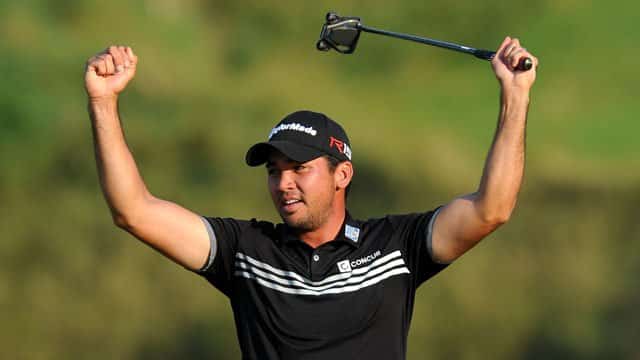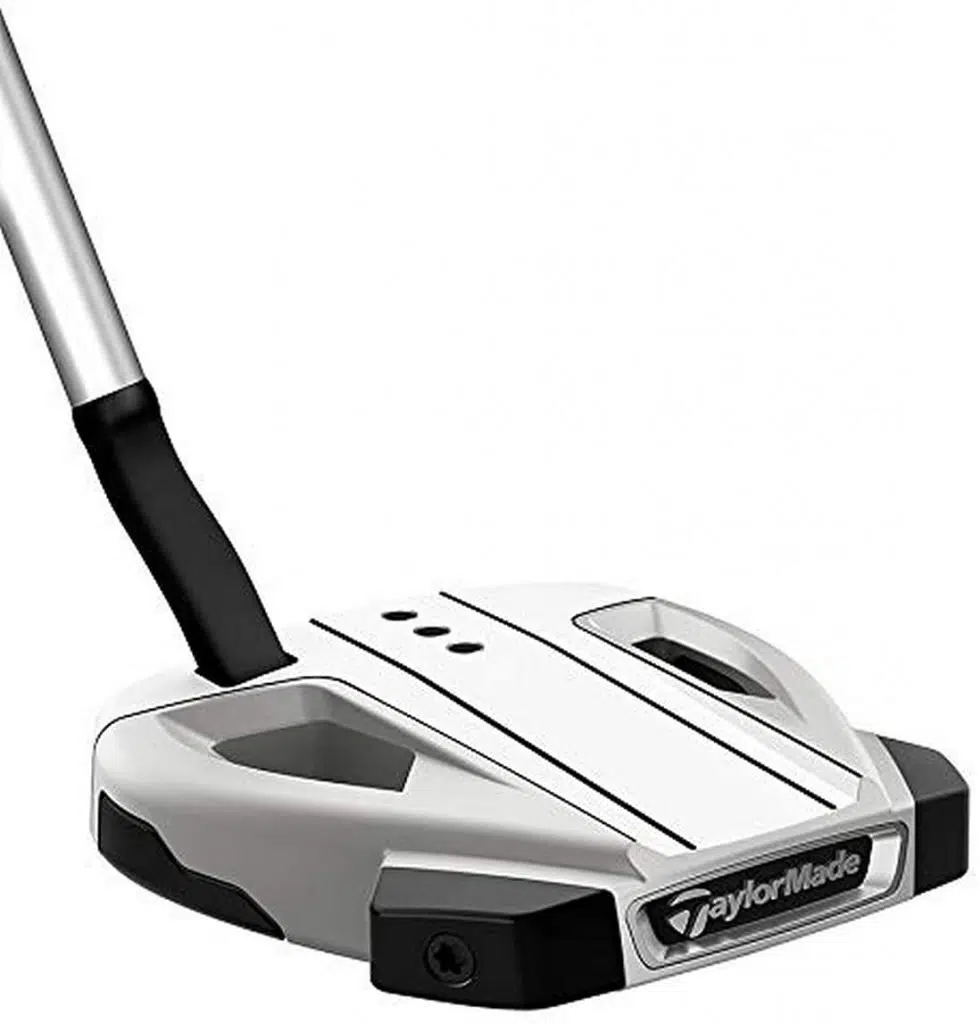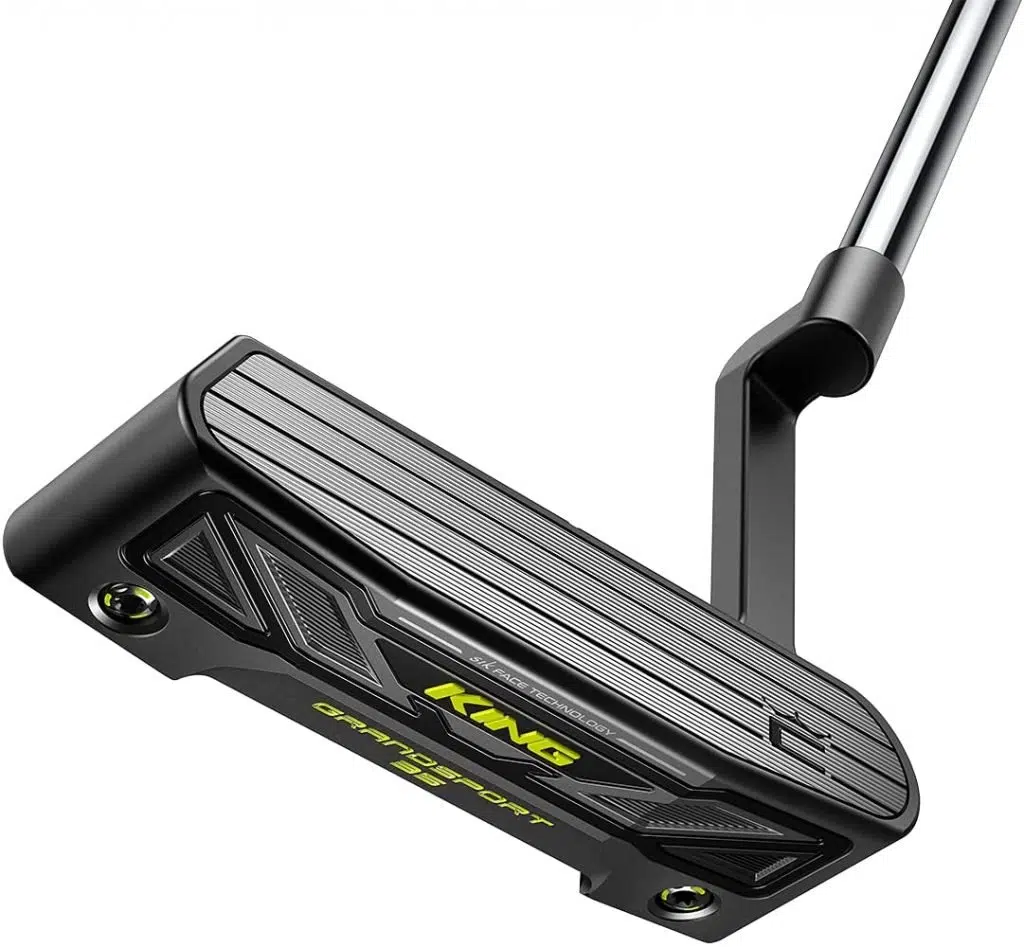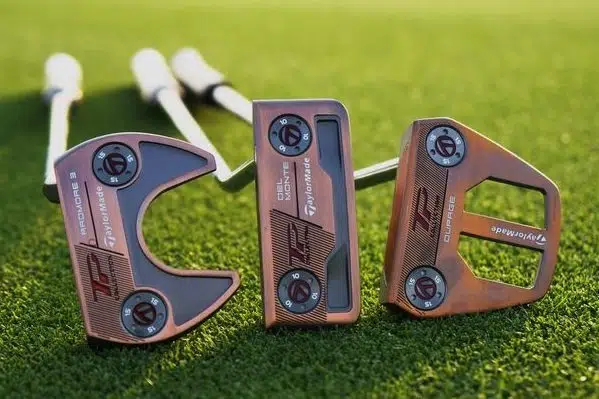Amateur golfers usually spend hours upon hours researching, testing and getting fitted for drivers, woods and irons, perhaps even wedges too.
However, the most used club in your bag – your putter – is often neglected when it comes to the amount of attention given to the styles and variations of different types.
Unfortunately for many people who love the game of golf, terms such as ‘toe hang’ and ‘face balanced’ sound like foreign languages, despite their huge importance in finding a putter that matches your stroke and technique.
If you are in the market for a new putter and don’t know where to start, establishing the difference between toe hanging and face balanced putters is crucial so you can match up the optimum design with the putting stroke you prefer.
Table of contents
What is the difference between toe hang and face balanced putters?
Face balanced putters, when balanced on your finger at the lowest point of the shaft, will have the face pointing towards the sky. When you do the same with a putter that has toe hang, it will balance on an angle towards the ground. If you putt on an arc, you are more suited to a putter with toe hang, whereas face balanced putters will lend themselves to straight back and through strokes.
Face balanced putters are designed to have an even weight distribution, helping the putter stay square in the backswing, through impact, and in the follow through.
Most of the beefy, mallet-style putters with a lot of weight and size to them are face balanced, providing excellent stability.
Putters with toe hang have, as the name suggests, more weight in the toe, rendering them more suitable for players with an arced swing.
The weight in the toe promotes a slight opening of the putter head as it rotates around the body.
Do I need a toe hang or face balanced putter?
You need a toe hang putter if you putt with a moderate to strong arc and a face balanced putter if you have a slight arc, or a straight back and through putting technique. While there’s no set rule, it will become more difficult to putt straight back and through as toe hang becomes more severe.
I like to think of it as a spectrum, with straight back and through at one end and strong arc at the other.
If you putt back and through on a straight line, keeping the face of the putter towards the target, you really need to go with a face balanced putter, something like the mallet style Two Ball Ten putter from Odyssey.
If you swing with a considerably strong arc, you’ll find a face balance putter quite restrictive for the path you need to take and should gravitate towards a toe hang putter.
The White Hot OG from Odyssey is a good toe hanging option for those who putt with an arc.
As you move away from a straight back and through or strongly arced stroke and find something closer to the middle, you’ll release it becomes easier to make a wider range of putters work for you.
The Mizuno M-Craft Range are well worth exploring if you sit somewhere around the ‘slight arc’ technique, as they have a broad array of putters of differing styles that will be well-suited to those who putt with any technique.
What is the advantage of a face balanced putter?
The advantage of a face balanced putter is its suitability for people who like to take the putter head back and through on a straight line. Many people find the larger, face balanced head more stable through impact, helping to keep short putts on line when struck aggressively.
Face balanced putters often come in mallet styles, too, which can be useful for people who play links style courses with large greens, or who play in wintry conditions where the greens are sometimes slow.
Mallets, as opposed to blades, usually require less force to get the ball travelling over longer distances, hence giving people a greater feeling of being able to get the ball to the hole over distance.
Do most pros use face balanced putters?
Golfers on the pro tour use a wide range of putters; everything from face balanced to toe hang in both mallet and blade styles. While many golfers like Rory McIlroy and Jon Rahm have opted for face balanced putters at times, others like Phil Mickelson swear by a toe hanging blade.
In the past, the sign of a high-quality golfer was often their ability to wield a razor thin, bladed putter with great success.
However, Jason Day’s 2015 PGA Championship victory – with a face balanced mallet – started to tempt pros away from their smaller, toe hanging blades.
Over the past few years, it has been perfectly normal to see every type of putter imaginable gamed successfully by the best in the world.
One particular style of putter, however, that has become uniquely popular is the toe hanging mallet, somewhat of a hybrid between the two broadly accepted styles.
The TaylorMade Spider range of putters come with a toe hang option, despite being mallet-style in appearance, helping to replicate the ‘inside down the line’ putting stroke preferred by many of the pros.
While most people generally fit into a straight back and through or arced stroke path, many professional golfers putt a little differently, with an inside backswing, but then a follow through straight towards the target.
The Inside Down The Line Short Track is a great putting aid that will groove your muscle memory into developing one of the most trusted putting strokes on the planet.
It fits in your bag comfortably for use in your pre-round warm up and will help you develop a stroke that imparts over-spin on the ball, reducing bobbling and inconsistency.

Which putter is best for my stroke?
If you have an arced stroke, a putter with toe hang is likely the best for you, while face balanced putters will suit people who swing straight back and through. It is important to test out a range of putters with different head styles, neck styles, lengths and weights before determining the best putter for your stroke.
If you are in the market for a new putter and really want to study up on all the options and details you need for the perfect fit, I suggest you read our recent article on how to choose the best putter for you.
Does toe hang really matter when putting?
Toe hang does matter, as people with an arced stroke will find it quite beneficial. If you use a face balanced putter for a strong arcing swing, you’ll find it difficult to line the face up at impact. Likewise, if someone with a straight back and through stroke tries to use a putter with sever toe hang, they may feel this is unstable and difficult to keep on line.
Theoretically, it is possible to putt straight back and through with a toe hang putter or use a face balanced option to implement a strongly arced stroke, but this will be more challenging and failing to use the assistance provided by the design of the putter to your benefit.
How do I know what kind of putting stroke I have?
The best way to determine what kind of putting stroke you have is to take some videos from behind to see if the stroke is straight back and through or arced. If you are looking to purchase a new putter, consider getting professionally fitted, as they will have technology to determine club path and will be able to give a clear indication of your putting stroke style.
Alignment sticks are really your friend here, too, as its extremely simple to line one up to a hole on the practice green and make a few putts from about six feet or so.
If you find that your putter head more or less tracks the alignment stick, then you have a straight back and through stroke.
If you come inside of the stick, return to square through impact, then come inside of the stick again, you have more of an arced stroke.
Some people – and many of the pros in fact – have an ‘in to square’ stroke, where they come inside on the back swing, then square through impact before following through straight to the target.
Once again, this can easily be determined with the help of an alignment stick on the practice green.
Best face balanced putters
Odyssey White Hot OG 2 Ball
I love the classic 2 ball look of the Odyssey White Hot OG putter, something Odyssey have retained for years alongside tweaks and improvements in technology.
The milled finish gives a crisp silver look to the putter, which also has a DFX Rubber Grip for that classic look and feel.
Mizuno M Craft VI
The M Craft range from Mizuno come in a range of colours and boast some of the most beautiful face milling on the market.
The M Craft VI is a face balanced wing mallet, quite heavy at 371 grams – perfect for minimising rotation on that straight back and through stroke.

TaylorMade Spider EX
One of the most popular putters on the PGA Tour, the Spider EX from TaylorMade (pictured above) has been gamed by the likes of Rory McIlroy and Jason Day.
It is extremely resistant to twisting of the face, helping keep those short, straight putts dead on line and ensuring longer lag putts end up closer to ‘tap in’ range.
Best toe hanging putters
Odyssey White Hot OG Seven Slant Neck
This White Hot OG toe hanging mallet from Odyssey comes with a short slant neck, perfect for face rotation and an arcing swing.
The ‘fangs’ make it feel as if it glides beautifully across the turf while still boasting the white hot insert synonymous with this line of putters.
Mizuno M Craft IV
The Mizuno M Craft IV has a deep back, somewhat of a hybrid design sitting between mallet and blade.
The moderate amount of toe hang means it suits perfectly those who have a prominent, but not overly excessive arc to their stroke.

Cobra King 3D Printed Grandsport
Futuristic in both appearance and 3D printed technology, the Cobra King Grandsport (pictured above) boasts not only the Cobra name, but technology from SIK golf through an aluminium face insert.
Tungsten weights in both the heel and toe add exceptional stability whilst still promoting an arced stroke moderately around the body.
Final message
You may have never realised, but it is extremely helpful to match the putter you use with the type of stroke you have.
Use our tips above to firstly determine the type of stroke you have, and once you’ve established whether you putt straight back and through or in an arced manner, explore some of our recommendations.
There’s every chance that finally switching out that face balanced putter that was working against your arced swing is the simple key to you holing more putts and shooting lower scores.
- TaylorMade SIM2 Max Driver vs M4 Driver: Worth it in 2024? - April 15, 2024
- 3 Ways to Win the Mental Game with the Bridgestone Mindset Golf Ball - March 29, 2024
- TaylorMade SIM Max & SIM2 Max Drivers: Are they Still Relevant in 2024? - March 9, 2024


